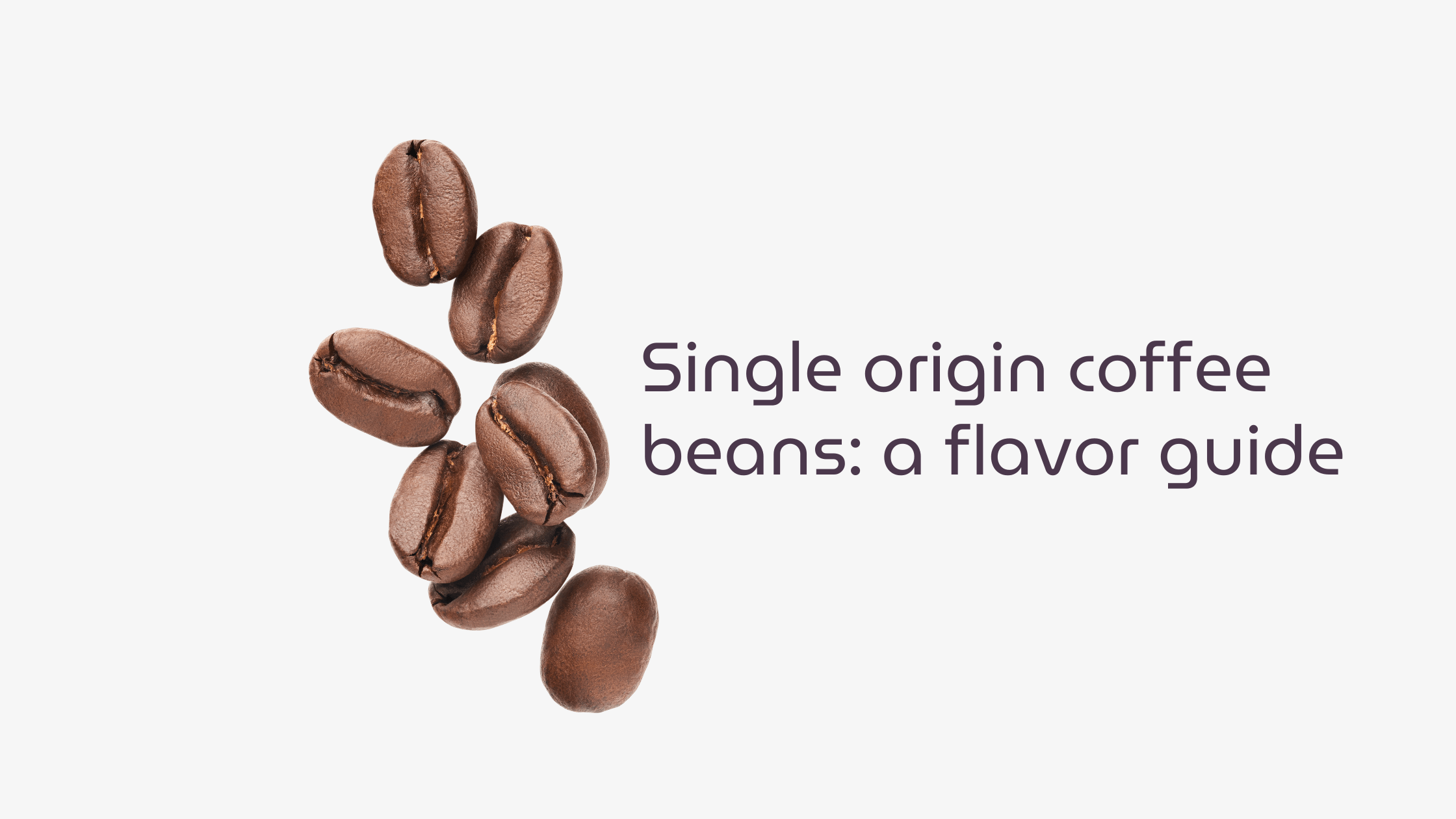
Single Origin Coffee Beans: How to Choose the Right One (With Flavor Guide)
New to single origin coffee beans? Learn how origin affects flavor, what to look for on the label, and how to choose beans that match your taste.
If you’ve ever stared at a shelf of single origin coffee beans—Guatemala, Ethiopia, Colombia, Kenya—and wondered which one to pick… you’re not alone.
The rise of specialty coffee means there’s more origin variety than ever. But for beginners and seasoned brewers alike, figuring out which region fits your taste can be a bit of a guessing game.
This guide is here to help. We’ll break down what to look for on a coffee label, how growing region affects flavor, and how to choose the best single origin coffee beans for your palate—with a flavor chart to guide your decision.
What Are Single Origin Coffee Beans?
Single origin coffee beans come from one country, region, or even a specific farm. Unlike blends—where multiple coffees are mixed for consistency—single origin beans are all about highlighting the natural flavor of a particular place.
Because they’re unblended, the origin’s elevation, soil, and processing method all come through in the cup. That’s why Ethiopian coffee tastes wildly different from Brazilian, even if they’re roasted the same.
What to Look for on the Bag
Choosing great single origin coffee starts with reading the label. Here’s what matters most:
1. Origin
Look for the country or region listed on the front. Some roasters also include the farm name or co-op (especially for traceable microlots).
- Guatemala = chocolatey and structured
- Ethiopia = fruity and floral
- Colombia = sweet and balanced
2. Process
This refers to how the bean was dried and fermented:
- Washed (wet): clean, bright, nuanced
- Natural (dry): fruity, bold, winey
- Honey or pulped natural: in-between, often sweet and creamy
3. Roast Level
Roast changes how much of the origin character comes through:
- Light roast: best for highlighting origin nuances
- Medium roast: brings balance and sweetness
- Dark roast: emphasizes roast notes over origin (great for body, less acidity)
4. Flavor Notes
These aren’t added—they’re what the roaster tastes during cupping. Notes like “citrus” or “brown sugar” give you a preview of the profile.
How Origin Affects Flavor
Where coffee is grown has a big impact on how it tastes. Everything from elevation to soil composition, climate, and farming practices contributes to what you experience in the cup.
This is often referred to as terroir—a term borrowed from wine that speaks to the natural characteristics of a place.
Add in different processing methods (like washed vs natural) and you’ve got a wide spectrum of taste, even before roasting comes into play.
Coffee Origin Flavor Guide
Here’s a quick-reference chart comparing the taste profiles of beans from some of the world’s most popular coffee-growing countries:
| Country | Flavor Profile | Process Commonly Used | Tasting Notes | Try If You Like… |
|---|---|---|---|---|
| Ethiopia | Bright, fruity, floral | Washed & Natural | Berry, jasmine, citrus | Tea-like coffee, adventurous sips |
| Colombia | Balanced, sweet, smooth | Washed | Cherry, caramel, cocoa | A clean, crowd-pleasing cup |
| Brazil | Chocolatey, nutty, low acidity | Natural | Cocoa, hazelnut, dried fruit | Mellow and approachable flavor |
| Guatemala | Rich, structured, sweet | Washed | Chocolate, citrus, spice | Depth and balance in every sip |
| Kenya | Juicy, bold acidity | Washed | Blackcurrant, tomato, citrus | Intense, fruit-forward flavors |
| Costa Rica | Clean, crisp, elegant | Washed / Honey | Citrus, brown sugar, floral | Balanced acidity and sweetness |
| Sumatra | Earthy, full-bodied | Wet-Hulled | Spice, tobacco, forest floor | Rich, savory, low-acid coffees |
→ Visit our Single Origin Coffee Guide for more on these regions.
How to Choose the Right Coffee for Your Taste
Still not sure where to start? Match your taste preferences to origin like this:
- Love chocolate and caramel? → Try Guatemala, Brazil, or Colombia
- Prefer fruity, tea-like flavors? → Go for Ethiopia or Kenya
- Want something low in acidity and smooth? → Brazil or Sumatra
- Looking for balance? → Colombia or Costa Rica
- Feeling adventurous? → Test washed vs natural from the same region
What Makes a Great Single Origin Coffee?
Beyond taste, there are a few signs you’re getting high-quality beans:
- Fresh roast date: Look for beans roasted within the past 2–4 weeks.
- Transparency: A good roaster tells you where it’s from and how it was processed.
- Roasted to order: Coffees like Happi Guatemala, Happi Brazil, and Happi Colombia are roasted in small batches and shipped fresh.
- Traceability: Origin details down to the farm show care in sourcing.
Conclusion
Choosing single origin coffee beans doesn’t have to be intimidating—it can actually be one of the most fun, flavor-filled ways to explore the world through your mug.
Start with what you like (chocolatey, fruity, bright?) and use this guide to steer your next purchase. Then brew, taste, and tweak. Every bag is a new journey.
Want a place to start? Explore Happi’s Single Origin Coffees or head back to our Single Origin Coffee Guide for more tips.
0 comments